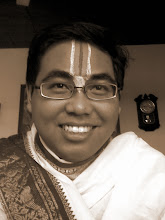After the fall of great Bilvatikta, the Hindu Javanese nobilities and Brahmin communities fled to Bali. Bali before was an independent country, with independent rulers, but in the reign of Kritanagara of Singhasari and later Rajasanagara-Gajamada of Bilvatikta, Bali was subdued. Bali has her own ruling dynasties for centuries, apart from Java, though there was a very deep connection between the two islands.
While Tarumanagara was a Hindu kingdom in West Java, there was also one kingdom of Kalinganagara in Central Java. By the name we could guess this was a kingdom built by certain nobilities of Orissa. The kingdom ruled by Maharani named Simha. This kingdom might be shifted to East Java by the growing power of Sailendras and Sanjayas. There in East Java we found inscription about Kanjuruhan Kingdom of Dinaya. Then in the reign of Sri Isvarakesavotsavatunga or Balitung (Raka i Watukura) of Sanjaya, both Central and East Java was came under his control. Probably the Kanjuruhan aristocracies again shifted to the neighbour island of Bali. We found similarities between Kanjuruhan and early kingdom of Bali.
After the growing maritime force of Srivijaya in Sumatra, Bali was also come under their power. And we found the ruling family of Bali has same name as the rulers of Srivijaya i.e. The Varmadevas. The Varmadevas then became the sole rulers of Bali. The Mahayana-Vajrayana Buddhism also introduced to Bali for the first time. So Bali at that time was applying the same religious practices as in Central Java, a religious system similar to Jagannath culture of Kalinga. Vedic in thought but Agamic or Tantric in practice, in the form of Trinatha worship. The form of Saivism at that time was in accordance with Vedic Vaishnavism. They worshipped Lord Siva as direct representation of Supreme God in material world. Because the Vishnu worship at that time has a concept of Niskala-Sakala, similar with Vaikhanasas system today. The Vaikhanasas worships Mula-bheram as Niskala aspect of Narayana and Utsava-bheram as Sakala. Similarly, the Balinese at that time worshipped Lord Narayana as Niskala and Lord Siva as Sakala. So this is very unique faith! Could you imagine Lord Siva considered by them as Sakala aspect of Narayana? Thus worship of Narayana and Siva were not differentiated by them. They worshipped Narayana as Paramatma of Siva and Sun as enunciated in the Atharvaveda Sirah. These tenets were believed as preached by the lineage of the great sage Agasthiya of South, the mula-guru of Nusantara and developed in Dihyang of Central Java, by Siddha-rishis from Agasthiya’s lineage. One of them called Markandeya (might not same person with Markandeya Rishi of Puranas) came to East Java and organized his hermitage in Ravang. From this place he came to Bali and was the origin of Brahmanic communities of ancient Bali, the royal priesthood of the ruling Varmadevas. Till this very day, his descendants called themselves Vaishnava Brahmins and continuing these spiritual thoughts. Their practices and theological concepts remind me so much with the Vaikhanasa Vaishnavas of South India, rather than more widespread Pancaratrika Vaishnavas. Other sects of Saivism, Buddhism, etc. independently practised their teaching and equally patronized by the same Varmadeva kings.
By the invasion of Singhasari under Kritanagara’s troupe, the Kalachakrayana was introduced to Bali. Then came the time of Bilvatikta’s invasion. The Bilvatikta religion of Saiva-buddha-agama also became widespread in Bali. By the coming of the greatest Saiva high priest of Bilvatikta, Dvijendra, after the fall of Javanese Hinduism, this new form of Saivism attained its peak achievement. The Bilvatikta nobilities tried to preserve everything they have in Bali, to save them from Islamic influence. The Balinese faith and spiritual culture at present day was shaped by various form of Vedic and Buddhist thoughts through a long evolutionary process.
Bali and some remote parts of Java still preserved their Hindu belief. Many literatures of Hindu and Buddhist teaching from past centuries were studied by priestly class of Bali and some aristocratic family. But the whole religion of Balinese, as I observed, was practices in two different ways. The Tantric Saiva-buddha-agama of Bilvatikta was limited to Brahminical lineages of more recent Bilvatikta transmigration. As the last Javanese origin peoples of Bali, they mainly became today’s Balinese nobility and religious elite. The practices of Saiva-buddha-agama in its pure form only limited to them. The hereditary Saiva Brahmin high priests and so called hereditary “Buddhist” Brahmins, who practicing Vajrayana and Saivite influenced Tantra, were their leading authorities. In other part we have common people’s religion. Similar with an older form of Kalinga influenced Balinese-Javanese Hinduism. They have priestly orders came from common people, administering the temple affairs, though considered lower than Saiva-buddha ordained high priests, but actually more influential in peoples religious life. The earlier Javanese incomers were the Brahmanic descendant of Markandeya and his follower. They have become inseparable part of Balinese common peoples, stay apart from the Bilvatikta newcomers. Their high priests practicing Tantric Vaishnavism and preserving their own unique literatures. But they have influenced each other so deeply for centuries. Finally just by superficial observation, we could only see a whole unique and distinct form of Balinese Hinduism.
Wednesday, February 25, 2009
Subscribe to:
Post Comments (Atom)













No comments:
Post a Comment